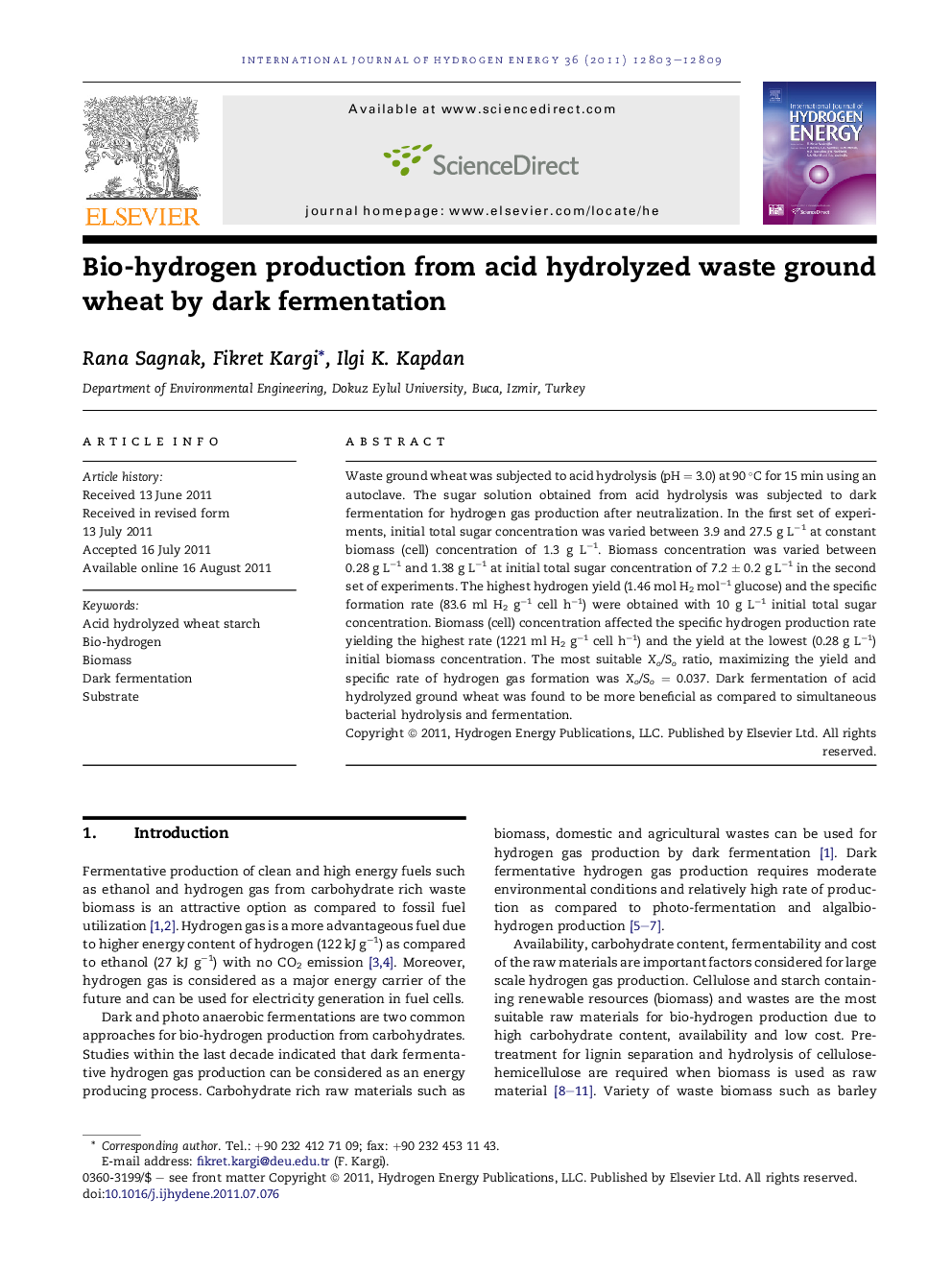| Article ID | Journal | Published Year | Pages | File Type |
|---|---|---|---|---|
| 1271944 | International Journal of Hydrogen Energy | 2011 | 7 Pages |
Waste ground wheat was subjected to acid hydrolysis (pH = 3.0) at 90 °C for 15 min using an autoclave. The sugar solution obtained from acid hydrolysis was subjected to dark fermentation for hydrogen gas production after neutralization. In the first set of experiments, initial total sugar concentration was varied between 3.9 and 27.5 g L−1 at constant biomass (cell) concentration of 1.3 g L−1. Biomass concentration was varied between 0.28 g L−1 and 1.38 g L−1 at initial total sugar concentration of 7.2 ± 0.2 g L−1 in the second set of experiments. The highest hydrogen yield (1.46 mol H2 mol−1 glucose) and the specific formation rate (83.6 ml H2 g−1 cell h−1) were obtained with 10 g L−1 initial total sugar concentration. Biomass (cell) concentration affected the specific hydrogen production rate yielding the highest rate (1221 ml H2 g−1 cell h−1) and the yield at the lowest (0.28 g L−1) initial biomass concentration. The most suitable Xo/So ratio, maximizing the yield and specific rate of hydrogen gas formation was Xo/So = 0.037. Dark fermentation of acid hydrolyzed ground wheat was found to be more beneficial as compared to simultaneous bacterial hydrolysis and fermentation.
► Acid hydrolyzed ground wheat was used for H2 gas production by dark fermentation. ► The optimum substrate and cell concentrations were determined. ► Acid hydrolysis followed by fermentation was more beneficial as compared to bacterial hydrolysis and fermentation.
